Attenuation of recombinant vesicular stomatitis virus-human immunodeficiency virus type 1 vaccine vectors by gene translocations and g gene truncation reduces neurovirulence and enhances immunogenicity in mice
- PMID: 17942549
- PMCID: PMC2224363
- DOI: 10.1128/JVI.01515-07
Attenuation of recombinant vesicular stomatitis virus-human immunodeficiency virus type 1 vaccine vectors by gene translocations and g gene truncation reduces neurovirulence and enhances immunogenicity in mice
Abstract
Recombinant vesicular stomatitis virus (rVSV) has shown great potential as a new viral vector for vaccination. However, the prototypic rVSV vector described previously was found to be insufficiently attenuated for clinical evaluation when assessed for neurovirulence in nonhuman primates. Here, we describe the attenuation, neurovirulence, and immunogenicity of rVSV vectors expressing human immunodeficiency virus type 1 Gag. These rVSV vectors were attenuated by combinations of the following manipulations: N gene translocations (N4), G gene truncations (CT1 or CT9), noncytopathic M gene mutations (Mncp), and positioning of the gag gene into the first position of the viral genome (gag1). The resulting N4CT1-gag1, N4CT9-gag1, and MncpCT1-gag1 vectors demonstrated dramatically reduced neurovirulence in mice following direct intracranial inoculation. Surprisingly, in spite of a very high level of attenuation, the N4CT1-gag1 and N4CT9-gag1 vectors generated robust Gag-specific immune responses following intramuscular immunization that were equivalent to or greater than immune responses generated by the more virulent prototypic vectors. MncpCT1-gag1 also induced Gag-specific immune responses following intramuscular immunization that were equivalent to immune responses generated by the prototypic rVSV vector. Placement of the gag gene in the first position of the VSV genome was associated with increased in vitro expression of Gag protein, in vivo expression of Gag mRNA, and enhanced immunogenicity of the vector. These findings demonstrate that through directed manipulation of the rVSV genome, vectors that have reduced neurovirulence and enhanced immunogenicity can be made.
Figures
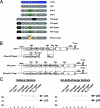
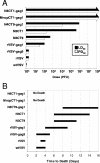
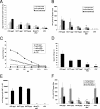
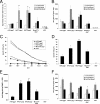

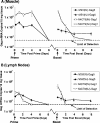
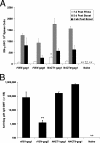
References
-
- Brandsma, J. L., M. Shlyankevich, L. Buonocore, A. Roberts, S. M. Becker, and J. K. Rose. 2007. Therapeutic efficacy of vesicular stomatitis virus-based E6 vaccination in rabbits. Vaccine 25751-762. - PubMed
-
- Clarke, D. K., F. Nasar, M. Lee, J. E. Johnson, K. Wright, P. Calderon, M. Guo, R. Natuk, D. Cooper, R. M. Hendry, and S. A. Udem. 2007. Synergistic attenuation of vesicular stomatitis virus by combination of specific G gene truncations and N gene translocations. J. Virol. 812056-2064. - PMC - PubMed
-
- Coleman, J. W., E. Ogin-Wilson, J. E. Johnson, F. Nasar, T. P. Zamb, D. K. Clarke, R. M. Hendry, and S. A. Udem. 2007. Quantitative multiplex assay for simultaneous detection of the Indiana serotype of vesicular stomatitis virus and HIV gag. J. Virol. Methods 14355-64. - PubMed
-
- Egan, M. A., S. Y. Chong, S. Megati, D. C. Montefiori, N. F. Rose, J. D. Boyer, M. K. Sidhu, J. Quiroz, M. Rosati, E. B. Schadeck, G. N. Pavlakis, D. B. Weiner, J. K. Rose, Z. R. Israel, S. A. Udem, and J. H. Eldridge. 2005. Priming with plasmid DNAs expressing interleukin-12 and simian immunodeficiency virus gag enhances the immunogenicity and efficacy of an experimental AIDS vaccine based on recombinant vesicular stomatitis virus. AIDS Res. Hum. Retrovir. 21629-643. - PubMed
Publication types
MeSH terms
Substances
Grants and funding
LinkOut - more resources
Full Text Sources
Other Literature Sources
Medical

